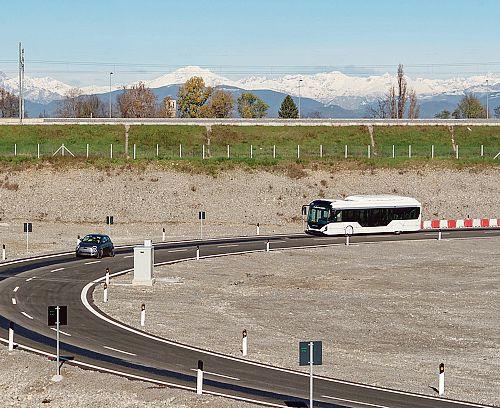While Tesla has revolutionized the world of electric cars by integrating charging via its Superchargers into its ecosystem, some manufacturers are also working on charging solutions.
In particular by induction or wireless.
This is particularly the case for Volvo and the Stellantis group.
In Gothenburg, Sweden, the Swedish manufacturer is currently testing this solution with a local taxi company.
When the car arrives in its parking space, a charging station transmits the energy to a plate embedded in the bitumen, which “sends” it to a receiving unit placed under the vehicle.
With such a system, there is no longer any need for a cable.
The Swedish manufacturer ensures that the charging power is greater than 40 kW;
this is four times faster than an 11 kW charging station in alternating current and almost as fast as a 50 kW charging station in direct current.
We remember that BMW had been a pioneer by marketing this type of device at the end of 2018 to recharge the accumulators of the rechargeable hybrid 5 Series.
Failing to find a favorable response from customers, this technology ended up disappearing from the catalog.
Charge while driving
By launching the Arena del Futuro, the Franco-Italian group Stellantis goes further.
Because vehicles no longer recharge when stationary but while driving.
Since last December, a Fiat 500e and an Iveco E-Way bus have been circulating on an experimental ring with a length of 1,050 m.
The 1 MW electrical power system feeds wired pathways placed under the asphalt, like a Scalextric circuit.
To transfer the energy to the batteries, the vehicles are equipped with a specific receiver.
“This induction technology is very interesting, but it is very expensive today, notes Clément Molizon (UFE).
In the medium term, however, it will probably be interesting for very specific uses, such as taxi ranks, for example.”
At Stellantis,
the induction charging program is part of a vast investment plan of more than 30 billion euros in favor of electrification.
For Anne-Lise Richard, head of the e-Mobility Business Unit at Stellantis, this technology has obvious advantages in terms of recharging time and battery size since the operation is carried out in motion.
In this way, the construction of mega charging station stations could be partly avoided.
There remains a major unknown: the cost of installing such devices on the road.
this technology has obvious advantages in terms of recharging time and size of the batteries since the operation is carried out on the move.
In this way, the construction of mega charging station stations could be partly avoided.
There remains a major unknown: the cost of installing such devices on the road.
this technology has obvious advantages in terms of recharging time and size of the batteries since the operation is carried out on the move.
In this way, the construction of mega charging station stations could be partly avoided.
There remains a major unknown: the cost of installing such devices on the road.















